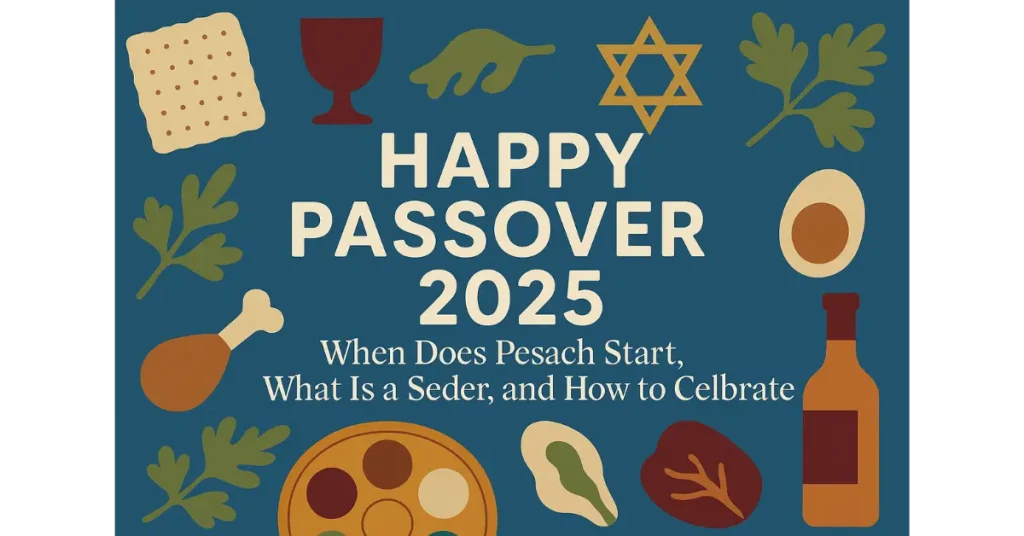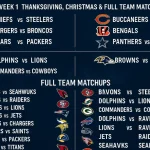There’s something about the tender stretch of spring that awakens memory. Maybe it’s the shy push of green, or the whisper of grape juice being poured into a familiar cup. Each year, as another Passover approaches, I feel the stirrings in my bones—a longing for the stories, food, and rituals that root me to a family and a people who cherish freedom above all else.
If you’ve ever wondered why matzah crumbs seem to multiply in Jewish homes at this time of year—or what draws families and friends together around laden tables to recite the same ancient words—you’re not alone. Whether you’re new to Passover, preparing to host your first Seder, or simply wishing to understand more about this beautiful tradition from the Jewish holiday calendar 2025, keep reading. I want to bring you into the heart of Pesach: not just the dates, but the soulfulness, the taste, the warmth, and sometimes the chaos that makes it so very real.
When Does Passover 2025 Start?
Let’s set the scene. After all, Jewish holidays float through the year on their own rhythm, often seeming to sneak up with a moon’s cycle rather than our familiar Gregorian calendar. This year, Passover—called Pesach in Hebrew—begins at sundown, Saturday, April 12, 2025. Officially, this means you’ll find homes across the Jewish world lighting candles, saying prayers, and gathering for the first Seder as dusk falls and the stars emerge.
You might ask, “When does Passover end in 2025?” Well, in the traditional observance, Passover continues for eight days, concluding at nightfall on Sunday, April 20, 2025. For many Reform Jews and those in Israel, it lasts seven days, closing at nightfall on Saturday, April 19.
Mark those Passover 2025 dates on your calendar. They’re not just placeholders—they are invitations. Each marks the arc of a story: from slavery to freedom, from sorrow to celebration.
What Is Pesach and Why Does It Matter?
So, what is Pesach? Technically, it’s the commemoration of the Exodus: the tale of the Israelites escaping from slavery in Egypt, led by Moses and a faith that their suffering would not go unanswered. But, in truth, it’s about more than just history. Pesach is about the pulse of hope in dark places, about resilience, and about our shared hunger (literal and figurative) for liberation.
For many Jews, Passover is the most evocative of festivals. It’s earthy, tactile. It smells like cinnamon and horseradish, like parsley dipped in salt water, like matzah that crunches between your teeth and lingers. These Pesach food symbols aren’t fancy, but they are deeply meaningful. They awaken the senses and the soul.
The Heart of the Holiday: What Is a Seder?
Ask any Jew what defines Passover, and they’ll likely summon a picture that’s as messy as it is sacred: multigenerational tables, wine-stained tablecloths, laughter, squabbling, and the recitation of the Haggadah Passover—the book that tells the story, asks the questions, and guides the night.
But what is a Seder? The word means “order” in Hebrew, and the Seder is the elaborate meal with a carefully prescribed sequence. Every step, from the first blessing over wine to the final song, is intentional. The Seder meal’s meaning is about remembrance, connection, and asking questions. It’s structured, but it leaves space for the spontaneous—a child’s giggle, a song sung off-key, a new interpretation that sparks conversation.
Seder Plate: More Than Just a Centerpiece
One of Passover’s most recognizable icons is the Seder plate—a round platter holding symbolic foods that represent different parts of the Exodus story. It’s the centerpiece, both visually and spiritually.
So, what is a Seder plate? It usually holds:
- Maror: Bitter herbs (often horseradish), symbolizing the pain of slavery.
- Charoset: A sweet, chunky mixture of apples, nuts, wine, and cinnamon, representing the mortar used by the Israelites but sweetened to remember hope.
- Karpas: A green vegetable (parsley or celery, sometimes even potato), dipped in salt water to recall tears shed in Egypt.
- Z’roa: A roasted shank bone, representing the ancient Passover sacrifice.
- Beitzah: A roasted egg, signifying mourning or the circle of life.
- Chazeret: Sometimes a second bitter herb, as traditions differ.
Every item on the plate sparks sensory memory and storytelling. Each is both literal and metaphorical—a way to invite everyone at the table to connect, question, and imagine.
The Power of Story: Haggadah Passover
No Passover celebration is complete without the Haggadah Passover—the script and songbook that leads participants through the Seder. More than a relic, the Haggadah has been rewritten, illustrated, and adapted across generations. Some families cherish an old, wine-spotted edition; others create their own with poetry, art, and handwritten notes.
What’s common in all: the encouragement to ask, “Why is this night different?” It’s a question that invites challenge, reflection, and laughter. For many kids, it’s a highlight (especially when they get to show off their Four Questions in Hebrew or English).
Reading from the Haggadah is less about recitation and more about reliving the past to inform the present. The answers aren’t always easy, and sometimes, the night stretches long as every guest offers a thought. But that’s part of the magic—the idea that history is still unfolding around the table.
What Makes the Passover Celebration Special?
It’s tempting to see Passover as an obligation, a box to check on the Jewish holiday calendar 2025. But year after year, I’m struck by how alive it feels. Passover isn’t just about what you can’t eat (bye-bye, sourdough), but about what you create: community, creativity, and a meaningful moment for those you love.
Passover Traditions That Stick
Some families can’t imagine Pesach without a specific song, or the annual search for the afikoman (a hidden piece of matzah tucked away for children to find, ransom-style, in exchange for a prize). Others cherish the quiet moment of handwashing—an act both ancient and relevant, especially in our germ-aware world. For many, the Seder spills over into a raucous, late-night singalong, everyone’s voices mixing until you aren’t sure who’s leading whom.
The food, though simple—matzah, haroset, brisket, potatoes, roast chicken—takes on gravitas. It’s less about the ingredients and more about the memory, the repetition, the comforting taste of tradition.
The Deeper Meanings: Pesach Food Symbols
If you’ve ever wondered why we eat unleavened bread or lean to the left as we drink four cups of wine, it’s all about remembering.
- Matzah: Eaten because, legend goes, there wasn’t time for the dough to rise as the Israelites fled. Over time, it’s come to represent humility and simplicity.
- Wine: Four cups, symbolizing the promises of freedom in the Torah, and encouraging even introverts to offer a toast.
- Bitter herbs: A reminder that even in freedom, we are duty-bound to remember suffering—our own, and others’.
- Charoset: A symbol that even in the hardest labor, there is sweetness.
Every bite means something. Every sip connects us across continents and centuries.
How to Celebrate: Seder and Beyond
If this is your first Seder, or your first in a long while, here are some ways to make the Passover celebration truly yours:
- Prepare Early: Get to know the rituals, gather recipes, and don’t be shy about asking others how their families celebrate. Passover thrives on curiosity.
- Make a Seder Plate: You don’t need anything fancy. What matters is intention—place each item thoughtfully, and take a moment for gratitude.
- Read and Reflect: Take time with the Haggadah Passover, pausing for discussion. Encourage every attendee, young and old, to share.
- Embrace Imperfection: The best Seders almost never go as planned. Someone will spill juice, someone will forget a line, someone will wander from the table mid-story—and honestly, those are the stories you’ll remember.
- Sing, Question, Laugh: Don’t rush. Let the night meander. Let it feel like home.
Modern Takes: Passover Traditions Old and New
In 2025, you might find Seders that blend languages, that welcome friends from every walk of life, or that echo across video calls linking continents. Some families are veganizing old recipes, some are jazzing up the Haggadah with new art, and some host community Seders to ensure that no one is alone during the holiday.
The only rule? Stay open. Two questions. To change. To old songs and new friends.
Why Passover Still Matters
The story of Pesach is not just about fleeing Egypt—it’s about finding light in narrow places. Every time we gather, retell this ancient story, and taste the foods of our ancestors, we declare that freedom—to believe, to care, to welcome the stranger—still matters.
It’s easy, in a busy world, to forget the old rhythms. But every spring, as Passover approaches, I’m pulled back by the power of tradition. I think of my grandmother’s cracked Seder plate, my uncle’s booming retellings, my littlest cousin’s sticky fingers wrapped around a piece of matzah. I think of how we all become storytellers, stewards, and memory-keepers.
Passover 2025: A Living, Breathing Tradition
So, as Passover 2025 draws near and you find yourself searching “When does Passover start?” or “when does Passover end 2025,” remember: the truest answer isn’t just a date—it’s a feeling. It’s the anticipation, the flurry in the kitchen, the hush as candles are lit. It’s the laughter, the longing, the sense that across thousands of tables and hearts, a single story is being told—of endurance, of hope, and of home.
However you mark it, may your Passover celebration be sweet, meaningful, and wholly your own. Chag Pesach Sameach—may it be a festival of freedom for all.


